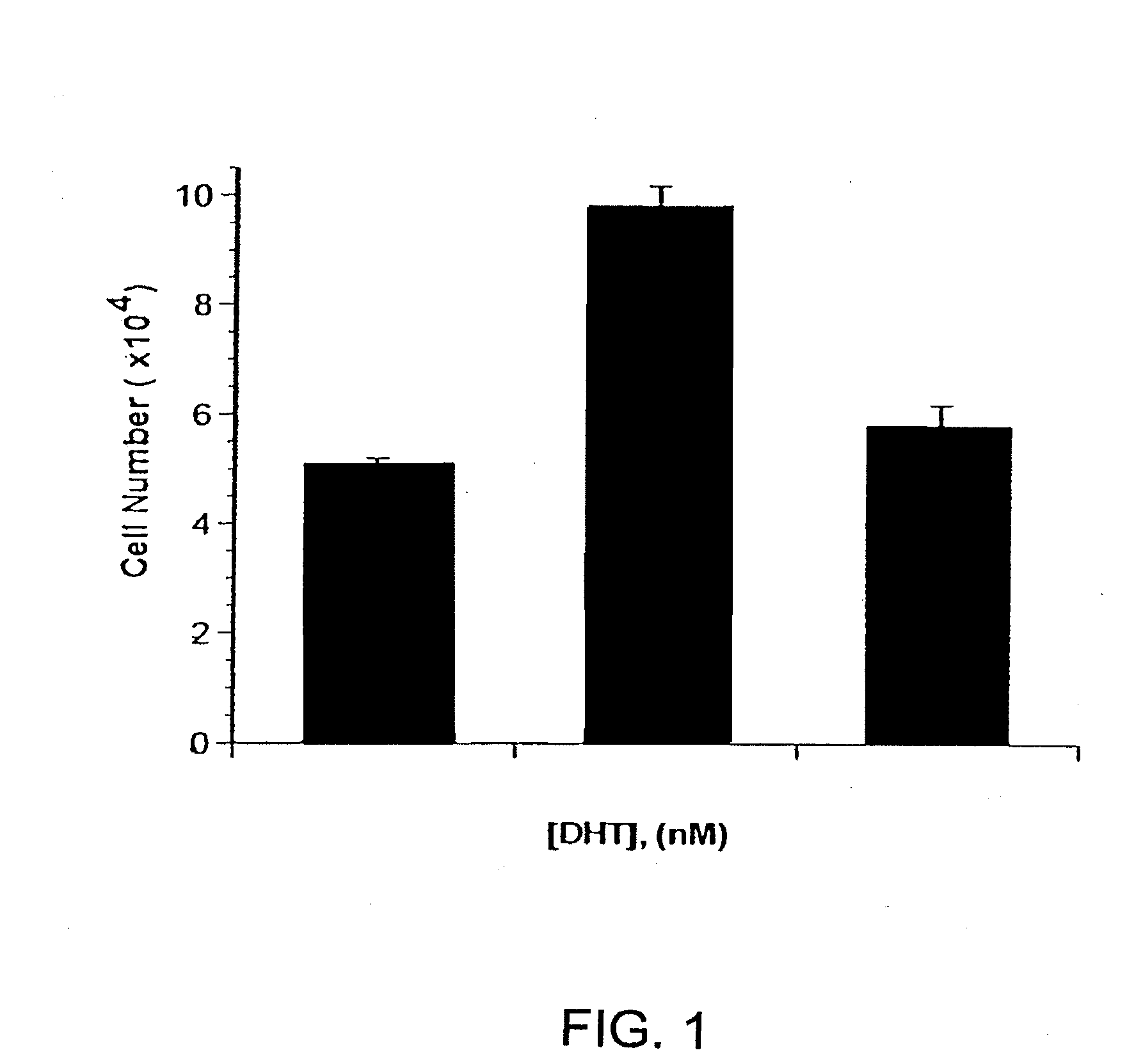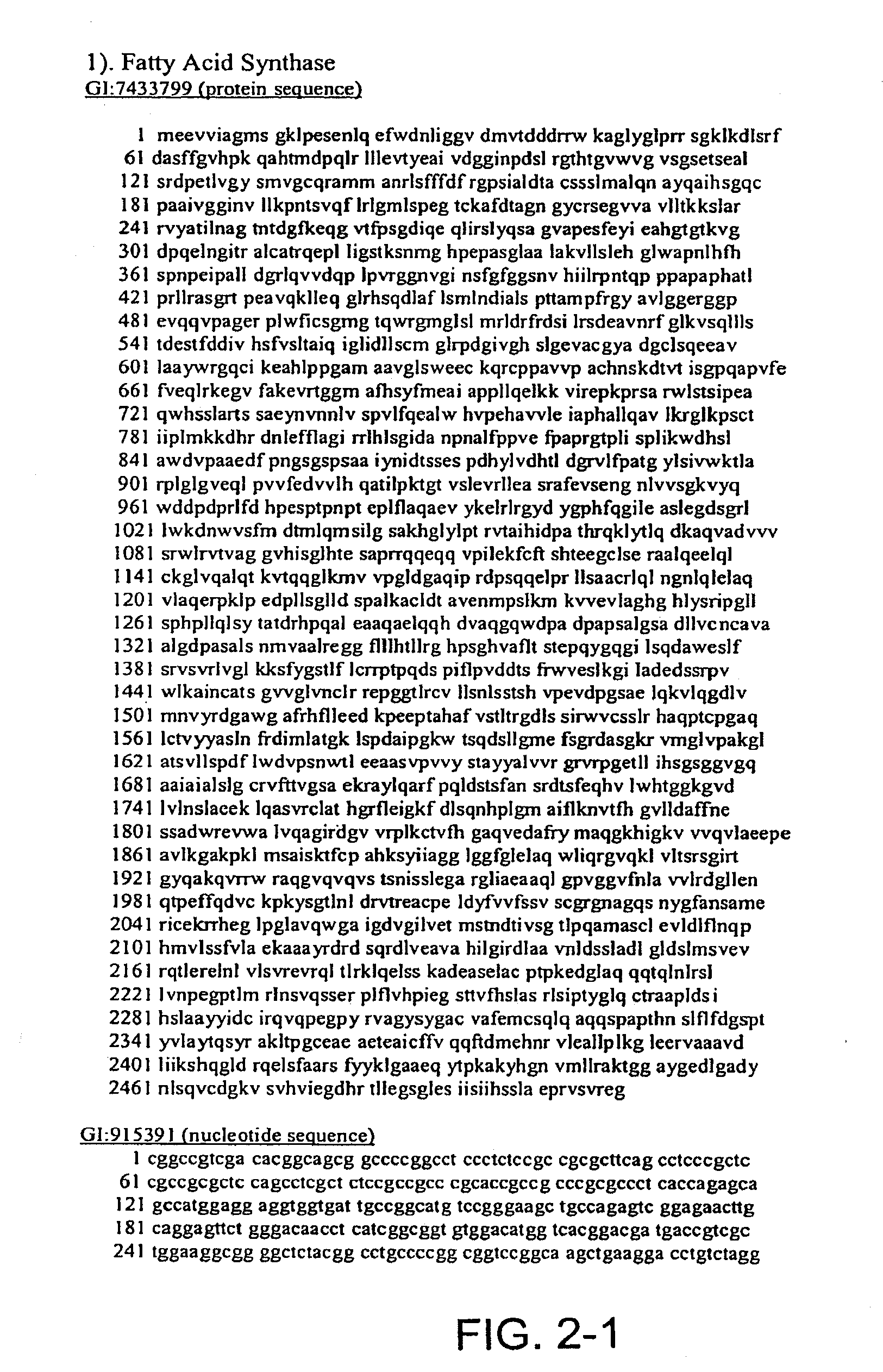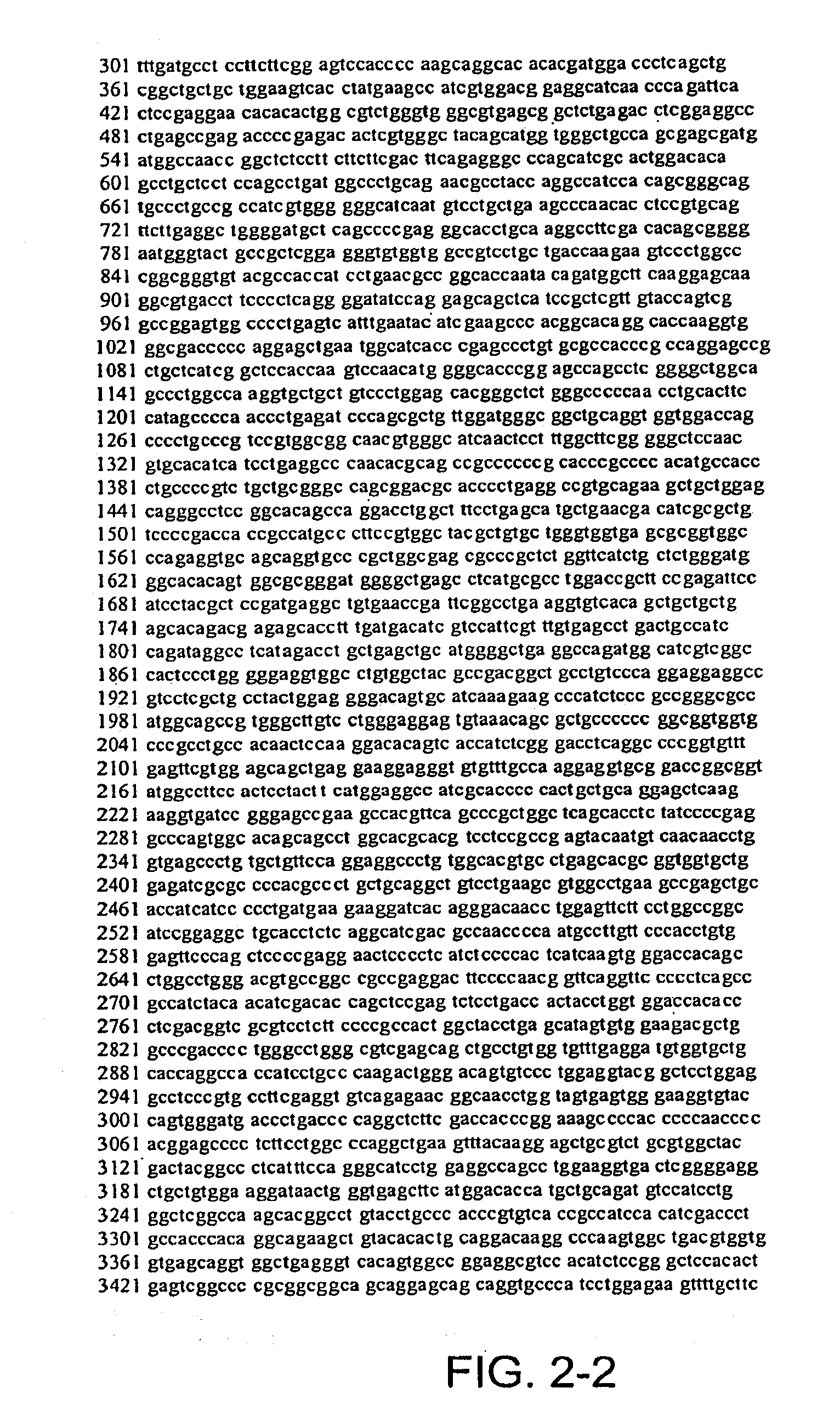Methods of detecting prostate cancer
a prostate cancer and detection method technology, applied in the field of serum/threonine hydrolases, can solve the problems of large cost, large amount of equipment, and large amount of available side effects, and achieve the effect of high throughput format and a difference in activity level
- Summary
- Abstract
- Description
- Claims
- Application Information
AI Technical Summary
Benefits of technology
Problems solved by technology
Method used
Image
Examples
example 1
Serine Hydrolase Signature of Prostate Cancer
[0094]This example demonstrates that prostate cancer cell lines display a unique profile, or signature, of active serine hydrolases, and characterizes the molecular identity of these enzymes.
[0095]Three well-characterized prostate cancer cell lines were compared to primary cultures of normal prostate epithelial cells, and to three cultures of human fibroblasts. In general, cells were grown in culture, lysed, then the serine hydrolase profiling agents, fp-PEC-Tamra or fp-PEG-Biotin, was added to the lysate. The sample was then separated by SDS-PAGE and labeled serine hydrolases were visualized using a fluorescence gel reader, or by western blot analysis using HRP-avidin. Some labeled serine hydrolases from samples of the prostate cancer cell lines were isolated and identified by mass fingerprinting using MALDI-TOF and MS / MS sequencing.
METHODS
Isolation of Cell Lysates
[0096]LNCaP, DU-145, and PC-3 prostate cancer cell lines were grown in RPM...
example 2
Fluorescent Probes
[0131]This example provides methods for preparing fluorescent probes useful for profiling a proteome.
[0132]Compound 1a is the starting material tetraethyleneoxy (3,6,9-oxa-1,11-diolundecane) and compound 1b is the starting material decylene-1,10-diol as depicted in the flow chart in FIG. 3. Preparation of triethyleneoxy-linked fluorophosphonate and N-fluorescer-formamidoalkylenecarbamoyl (fluorescer is BodipyFL or tetramethylrhodamine and the alkylene is 2 or 5 carbon atoms respectively), or N-fluorescein thioureidopentanylcarbamoyl, where the fluorescer in this example is fluorescein. The other fluorescer compounds are made in substantially the same way, using the different fluoresceralkylamino derivatives as shown in the flow chart.
[0133]Compound 2. A solution of 1 (3.9 g, 20.0 mmol, 3.0 equiv) in DMF (8.0 ml) was treated with TBDMSCl (1.0 g, 6.64 mmol, 1.0 equiv) and imidazole (0.9 g, 13.3 mmol, 2.0 equiv) and the reaction mixture was stirred for 12 hr at RT. Th...
PUM
| Property | Measurement | Unit |
|---|---|---|
| molecular weight | aaaaa | aaaaa |
| molecular weight | aaaaa | aaaaa |
| apparent molecular mass | aaaaa | aaaaa |
Abstract
Description
Claims
Application Information
 Login to View More
Login to View More - R&D
- Intellectual Property
- Life Sciences
- Materials
- Tech Scout
- Unparalleled Data Quality
- Higher Quality Content
- 60% Fewer Hallucinations
Browse by: Latest US Patents, China's latest patents, Technical Efficacy Thesaurus, Application Domain, Technology Topic, Popular Technical Reports.
© 2025 PatSnap. All rights reserved.Legal|Privacy policy|Modern Slavery Act Transparency Statement|Sitemap|About US| Contact US: help@patsnap.com



